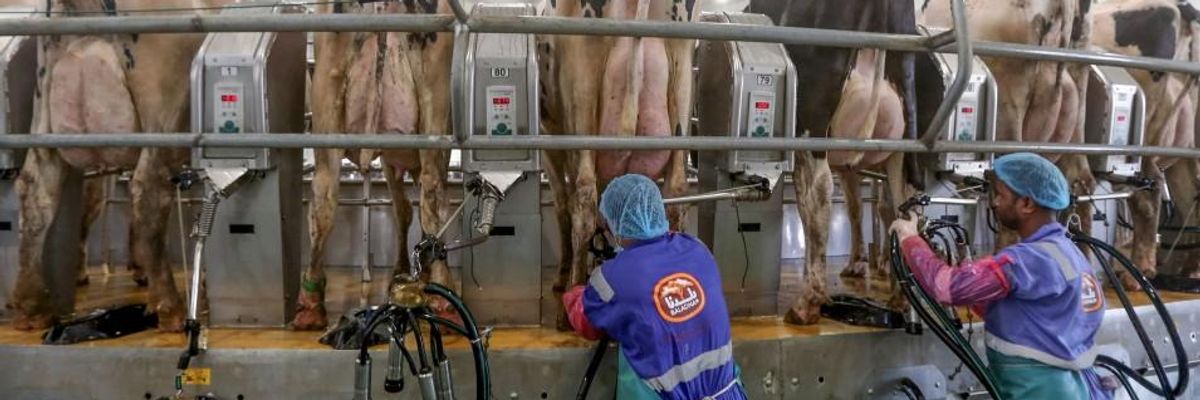One of the few bright spots of COVID-19 is our reawakened love for animals. Animal shelters across the country have emptied as stuck-at-home Americans foster and adopt cats and dogs in record numbers. With awe and appreciation, we are sharing stories of wild animals thriving. And in all of "Tiger King's" virality, many are condemning Joe Exotic's abuse of tigers and lions.
While companion and wild animals enjoy heightened recognition during this time, another group -- farmed animals -- fare far worse. Our taxpayer dollars, in the form of a bailout for Big Ag, could soon fund an industry that threatens to kill and discard millions of animals on farms because it's unprepared.
With workers standing shoulder to shoulder while the rest of the nation stands six feet apart, it's no surprise that slaughterhouses have become COVID-19 hotspots. A Smithfield slaughterhouse in South Dakota is now the nation's largest hotspot for COVID-19. Every major poultry company is reporting processing problems due to worker outbreaks and related shortages.
Slaughterhouses are clearly a
weak link in the food system and pose serious threats to our health, especially during a pandemic. But as plants shut down, we must also consider the fate of the millions of animals who had been scheduled for slaughter. Perhaps even billions will be killed and discarded, their deaths yet another tragedy of this pandemic.
News has emerged of exactly how some companies will address this "backlog" of animals: mass on-farm slaughter. One poultry company reported that it would kill 2 million birds using emergency slaughter methods. Such companies could use any of the horrifying methods approved by the American Veterinary Medical Association, including suffocating the birds by filling their barns with foam. The National Pork Producers Council threatened to kill baby pigs en masse if the government didn't intervene with a bailout.
At a single poultry processing plant, an average 1 million chickens are slaughtered in a five-day workweek -- 200,000 birds per day. If one plant drops to 50 percent capacity for even one week, 500,000 birds could be killed on-farm through emergency slaughter methods. Soon tens of millions could be cruelly killed and thrown away.
Why can't chickens live weeks or even months more on the farm? Because they aren't bred to. Rather, they are selectively bred to grow so fast that they reach slaughter weight in just 47 days. In factory farms, it's not uncommon to find chickens who can no longer walk, having collapsed under their own weight. Day by day, their organs and muscles break down.
Mass on-farm slaughter is unnecessary. First, the industry should have prepared by raising far fewer animals. But it's no use finger wagging now. It's not too late, however, to plan for future slaughterhouse shutdowns. The industry must work up the chain to stop the flow of animals by taking eggs out of hatcheries and breeder birds out of production. This is also a major opportunity to put fewer birds into barns, which will give them more space. They are typically crammed together so tightly that each bird has floor space equal to the surface size of an iPad.
This is a time to examine the weakness of America's behemoth animal production machine. It's also the time to devise a better food system, one that doesn't put so many -- from farmers to slaughterhouse workers, to animals and consumers -- at grave risk.
As we cherish more than ever our relationships with animals, we must not look away from the mass slaughter before us.
We must overhaul this system that treats animals like widgets rather than the sentient beings they are. This will include making improvements for animals and workers, diversifying protein production and helping farmers transition to plant-based protein models. This may be our only chance to hit reset and create a food system that is better for all.

